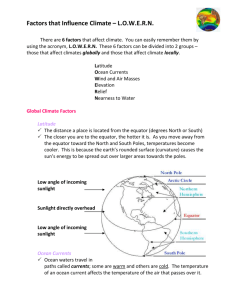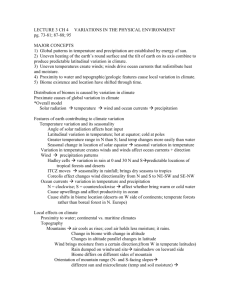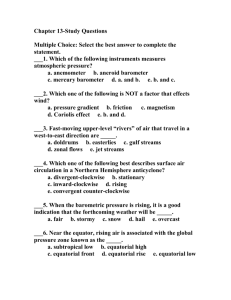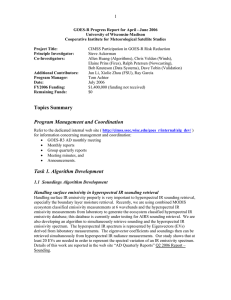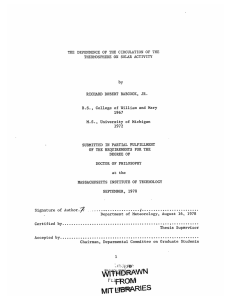Biology 101 / 102
advertisement
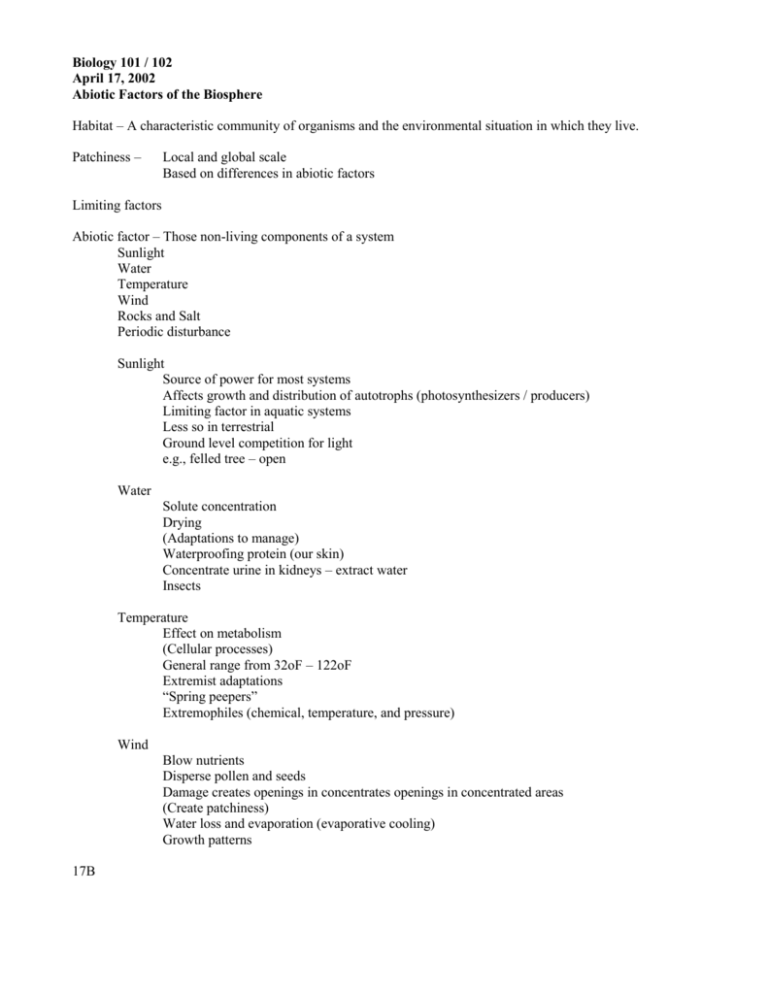
Biology 101 / 102 April 17, 2002 Abiotic Factors of the Biosphere Habitat – A characteristic community of organisms and the environmental situation in which they live. Patchiness – Local and global scale Based on differences in abiotic factors Limiting factors Abiotic factor – Those non-living components of a system Sunlight Water Temperature Wind Rocks and Salt Periodic disturbance Sunlight Source of power for most systems Affects growth and distribution of autotrophs (photosynthesizers / producers) Limiting factor in aquatic systems Less so in terrestrial Ground level competition for light e.g., felled tree – open Water Solute concentration Drying (Adaptations to manage) Waterproofing protein (our skin) Concentrate urine in kidneys – extract water Insects Temperature Effect on metabolism (Cellular processes) General range from 32oF – 122oF Extremist adaptations “Spring peepers” Extremophiles (chemical, temperature, and pressure) Wind Blow nutrients Disperse pollen and seeds Damage creates openings in concentrates openings in concentrated areas (Create patchiness) Water loss and evaporation (evaporative cooling) Growth patterns 17B Rocks and soil Structure and composition Affect distribution of plants Water chemistry Points of attachment Materials for structures Disturbance Fire, hurricanes, tornadoes, volcanoes Some organisms have evolutionary adaptations Climate patterns Sunlight – powering up the cycling of water Sunlight – powers the system Water – Amount and movement / cycling Temperature – Speed of cycles Rate of evaporation / transpiration Wind – Movement Chemistry Also….Movement in space Uneven heating Latitude Angle of strike – perpendicular or oblique “Concentration of energy” Uneven heating drives air movement and water currents Global Seasons – Result from tilt of Earth as it orbits the sun Orientation changes throughout the year Northern / Southern hemisphere Tipped toward or away from the sun Circulation of air (Winds and currents) Uneven heating Air warms > Rises > absorbs moisture > cools > falls > loses moisture Winds Doldrums Trade winds Prevailing winds Jet stream Doldrums – Tropics Air rises and falls Influence of direct sun “Column of calm” Trade winds Lose moisture over equator Spread dry air to higher latitudes Deserts (Sahara and Arabian) Dry air descends, moves back toward equator Tropics Picks up moisture and lifts again Prevailing winds Result from rising and falling air masses and Earth’s rotation Milder climates Pick up moisture, cool and drop at higher altitudes Wet or rainy What about high latitude deserts? Results from mountain ranges cutting off the flow of moist air Northern Hemisphere Trade winds blow from the NE Temperate zone – Westerlies (Northern H) Easterlies (Southern H) Ocean currents Prevailing winds Planet rotation Unequal heating Continents (shape and location) Effect on regional climates Main currents Gulf stream Japan Labrador Humbolt – Cools western South America, Eastern Australia, South of Asia and East of Africa Temperate area Tropical Local climate Proximity to large bodies of water and the presence of landforms – Moderate climate by absorbing heat and releasing heat Mountains Cooler with altitude (6oC / 1000 meter increase in altitude) Block airflow Microclimate Shading Wind Buffers Mosaic of scale differences Rotting log – Forest – region



